Over the last week, various crime fiction bloggers have shared lists of their Top 10 mystery books from the 1930s. As a listophile, I decided this was a bandwagon worth jumping on, and have provided my list below (in vaguely chronological order). The one constraint for these lists is that each book has to come from a different author.
I’d love to know what would make your Top 10. You can read other countdowns at Crossexamining Crime, The Puzzle Doctor, Ah Sweet Mystery, Mysteries Ahoy! and Countdown John’s Christie Journal.
Francis Iles — Malice Aforethought (1931)
“It was not until several weeks after he had decided to murder his wife that Dr Bickleigh took any active steps in the matter.” Thus begins Malice Aforethought, the first book produced by Anthony Berkeley under his Francis Iles pseudonym. Although the murderer and victim are both revealed in the opening sentence, the author has several surprises up his sleeve.
Peter Lovesey described this as marking the creation of “the modern crime novel”, with its focus on the psychology of the murderer rather than the detection of a crime — the detectives only make limited appearances towards the end of the book. The plot is loosely inspired by the true story of the "Hay Poisoner", Herbert Rowse Armstrong, who was found guilty of murdering his wife in 1921.
The writing is witty and ironic, and well-paced. The narrative mostly follows the mind of Dr Bickleigh, which is a fascinating place to be, especially as his misplaced arrogance becomes more obvious. Some of the other characters are intriguingly ambiguous, as we’re left guessing what they are really thinking. If you’re familiar with Anthony Berkeley, you’ll be expecting a clever ending, and this one does not disappoint. Outstandingly good.
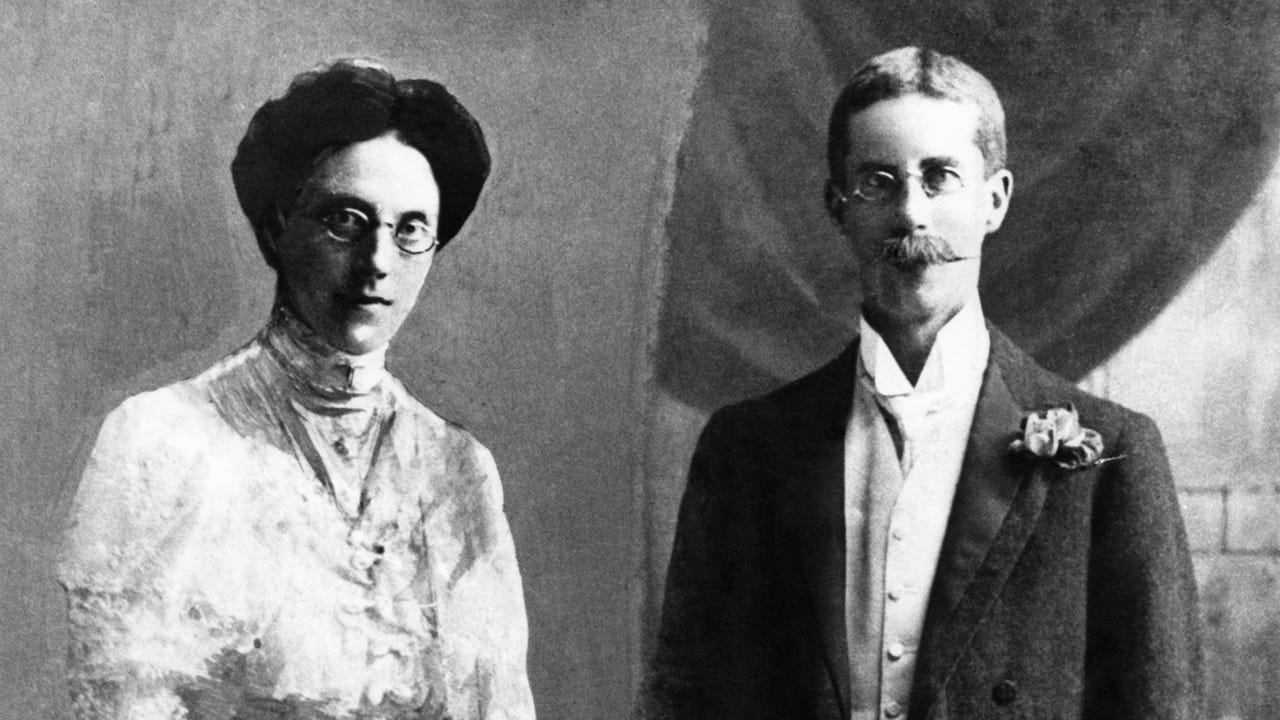
Ethel Lina White — Some Must Watch (1933)
Helen Capel takes a servant role in a remote house, in the vicinity of which a serial killer is operating — and one who targets young, working women. The murders seem to be getting closer to the Summit, leading to a climax one dark and stormy night.
Ethel Lina White has become one of my favourite writers, and not just because she was Welsh. She was a master of suspense, and Some Must Watch gradually, inexorably, builds to a dramatic conclusion. There are some very interesting characters in the house — especially the female characters — and I kept changing my mind about who could and couldn't be trusted. Miss Capel herself is convincingly depicted as a dangerously curious, independent-minded protagonist.
The book was film-ified in 1946 under the title The Spiral Staircase. I haven’t seen the film, but I do know that during its production, lead actress Dorothy McGuire went missing for twenty minutes when she accidentally locked herself in a closet in the basement.
Dorothy Sayers — The Nine Tailors (1934)
Stranded in a snowstorm, Lord Peter Wimsey joins an overnight bell-ringing marathon, which ends up connecting him with an historic jewel theft and a mysterious death. As the investigation continues, the belfry becomes an important scene, with the world of campanology both providing the book’s structure and assisting Wimsey in deciphering the real chain of events.
I did a Wimsey readthrough a few years ago, and this was the highlight for me. Is there a lot of arcane detail about bell-ringing? Yes. But is it cleverly crafted into an evocative narrative, with a neat and very satisfying ending? Definitely. I realise Sayers has been criticised for the ending too, but for me, it was a wonderful "why didn't I think of that?" moment.
My two other favourite 1930s Sayers novels are Have His Carcase and Busman’s Honeymoon. My least favourite is Gaudy Night, which I realise is a controversial opinion, but I’m not going to apologise for it.
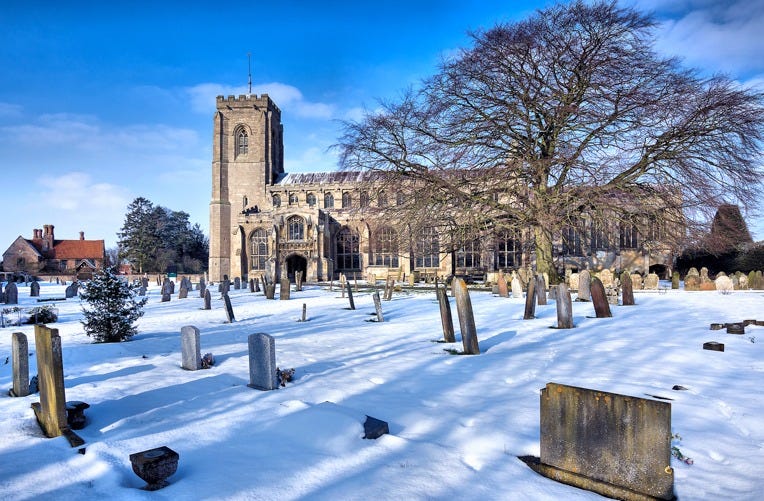
Freeman Wills Crofts — 12.30 from Croydon (1934)
Who killed Andrew Crowther on the 12.30 plane from Croydon? Find out at the start of chapter 2, and then follow the story from the murderer’s perspective as he plots, schemes and attempts to cover his tracks.
Eleven books into his Inspector French series, Freeman Wills Crofts decided to experiment with something new, writing his first inverted mystery. He revisited this subgenre a few other times in the 1930s, and I almost chose another specimen, Antidote to Venom (1938), for this list instead.
Crofts loves detail, which some critics find exhausting, but I think FWC is an expert at using detail to lure you into the mystery. In this case, we’re left trying to spot the errors that will lead to the criminal’s seemingly inevitable downfall. I especially enjoyed the extended courtroom scene towards the end. A brilliant book.
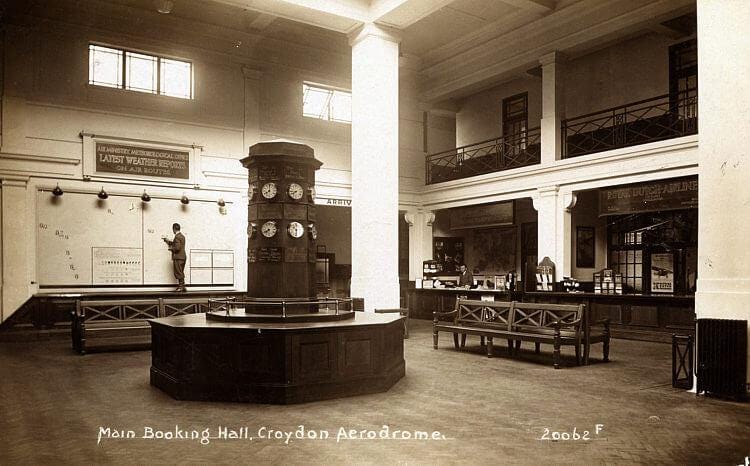
Alan Melville — Quick Curtain (1934)
During a production of Blue Music, Brandon Baker joins the ranks of entertainers who have literally died on stage, but fortunately Melville's detective duo is on hand to catch the culprit.
This is one of only six detective novels from the pen of Alan Melville, who had a varied career in the worlds of theatre and broadcasting. Melville was not concerned with serious crime-writing, preferring to produce more whimsical mysteries. In her review in The Sunday Times, Dorothy Sayers was disappointed that “Mr. Alan Melville takes all this detective business as a huge joke”. Personally, I’m glad he did — the result is a sustainedly witty and entertaining whodunnit.
Alongside the sharp writing, Quick Curtain contains some brilliant characterisations, and wonderful dialogue between the two Wilsons who do the detecting. There is an excellent ending too. His Death of Anton (1934) and Weekend at Thrackley (1936) have also been republished by the British Library, and are very much worth reading.
Agatha Christie — The A.B.C. Murders (1936)
It would be impossible to compile this list without an Agatha Christie novel — but which Christie to choose? The 1930s was a bumper decade for the Queen of Crime, witnessing the appearance of Murder on the Orient Express, And Then There Were None and Death on the Nile among others. But I’ve decided to settle for The A.B.C. Murders.
In this Poirot case, the Belgian detective finds himself pursuing a serial killer who is apparently obsessed with the alphabet, eliminating his victims in alphabetical order and leaving an ABC Rail Guide as a calling card. The story is told with a mixture of first- and third-person narrative, courtesy of Poirot’s bon ami Hastings.
As with the other great Christies from this decade The A.B.C. Murders combines an intriguing premise, an ingenious plot, and a cunning solution. I particularly enjoy the misleading journey on which Christie takes us as the mystery unfolds. A very enjoyable way of being fooled.
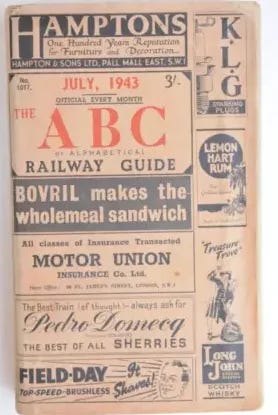
James Cain — Double Indemnity (1936)
Earlier this year, Double Indemnity became my first step into the world of classic American noir. It was serialised in 1936, though not published separately until the 1940s — sorry if that’s cheating for the purposes of this list. It was recommended to me by a friend at a church prayer meeting (the obvious source for crime fiction recommendations). It’s darker than my normal reading diet, but I loved it. The book was later turned into a highly-rated noir film (which I haven’t watched), featuring an uncredited cameo appearance from fellow novelist Raymond Chandler.
The plot revolves around some people who decide to plan a murder, but as you can predict, things don't go according to plan. The ensuing narrative is one that grabs you and doesn't let go. Part of the secret is that the novel is very plot-focussed — James Cain doesn't waste time with character development or other niceties. This means some aspects are completely implausible if you step back from the narrative, but the book's too absorbing to notice. A brilliant read.
Richard Hull — Murder Isn't Easy (1936)
At least three very good novels came from Hull in the 1930s (and perhaps more that I haven’t read). But Murder Isn’t Easy has been my favourite read of 2024 thus far, so it was an obvious choice for this list. You can read my thoughts here.
Nicholas Blake — The Beast Must Die (1938)
“I am going to kill a man. I don’t know his name, I don’t know where he lives, I have no idea what he looks like. But I am going to find him and kill him.” The memorable opening lines of an exceptionally good mystery.
Nicholas Blake was a pseudonym used by poet laureate Cecil Day-Lewis. When he wasn’t writing about sitting down awhile in the orangery, he produced a surprisingly large number of crime novels, 16 of which featured the detective Nigel Strangeways. The Beast Must Die is the only one I’ve read so far, and it was superb.
The Beast Must Die combines psychological thriller with Golden Age detection, with a clever plot and surprising twists. There are also several wonderfully memorable lines such as "Dante won’t butter your parsnips for you". It was recently turned into a British TV series, which I had to abandon after one episode. Stick with the book.
John Dickson Carr — The Black Spectacles (1939)
As with Christie, the 1930s was an excellent decade for John Dickson Carr novels. There are more on my TBR pile, so my choice may change on a hypothetical future list. But for now, I’ll settle for The Black Spectacles, which I reviewed a few weeks ago.
Those are my choices… what would you choose?





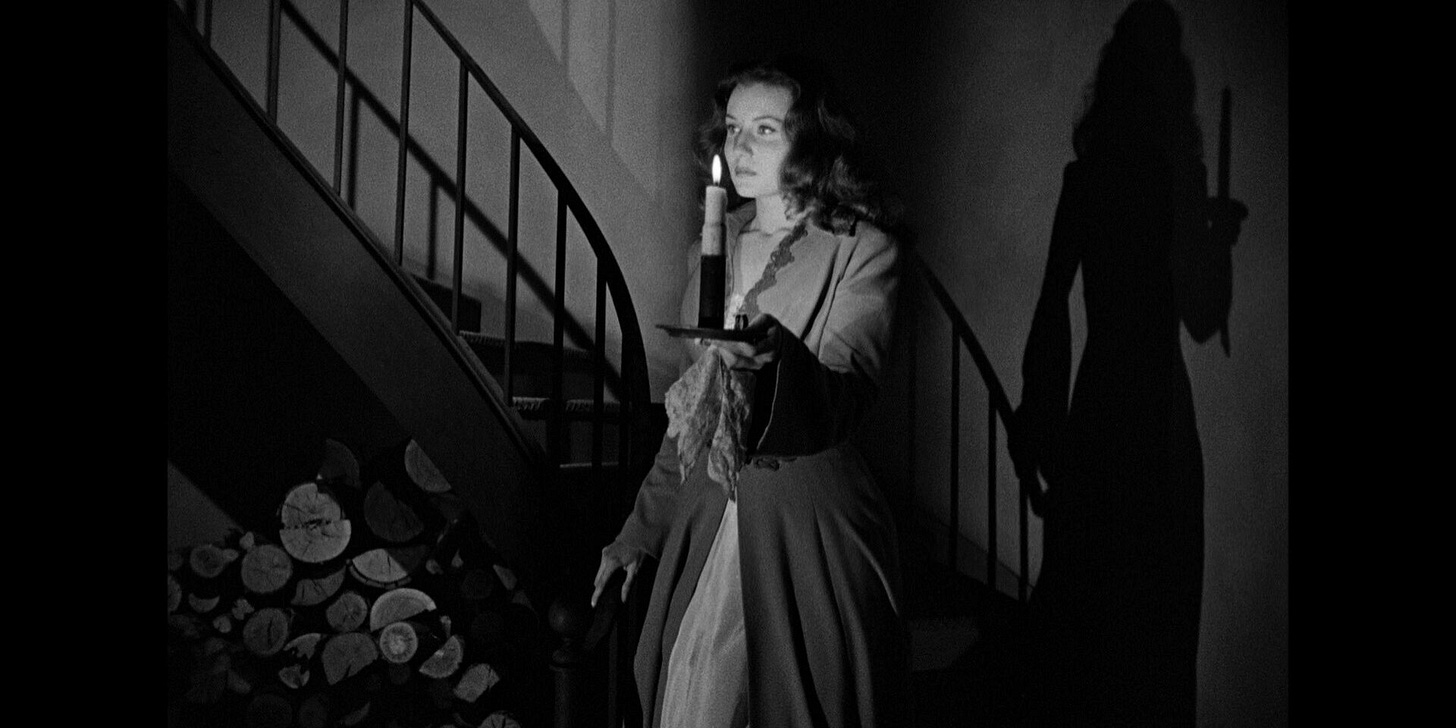

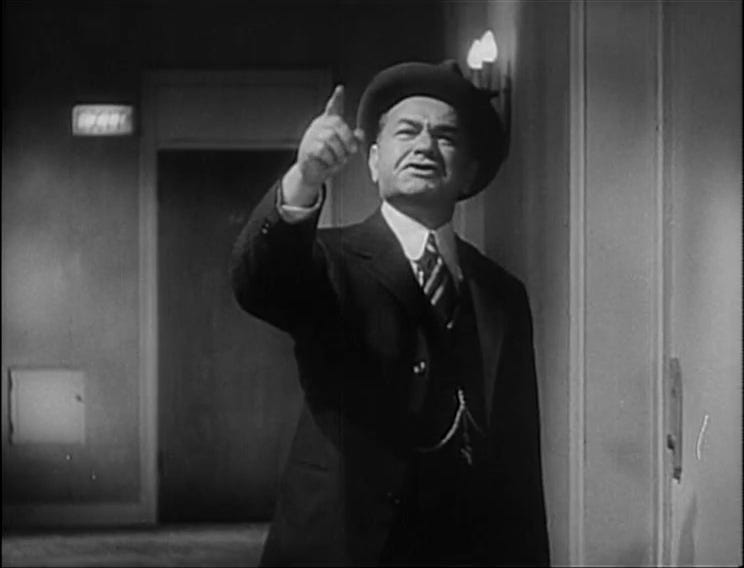
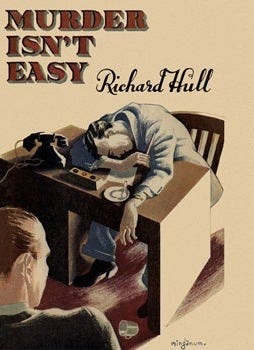
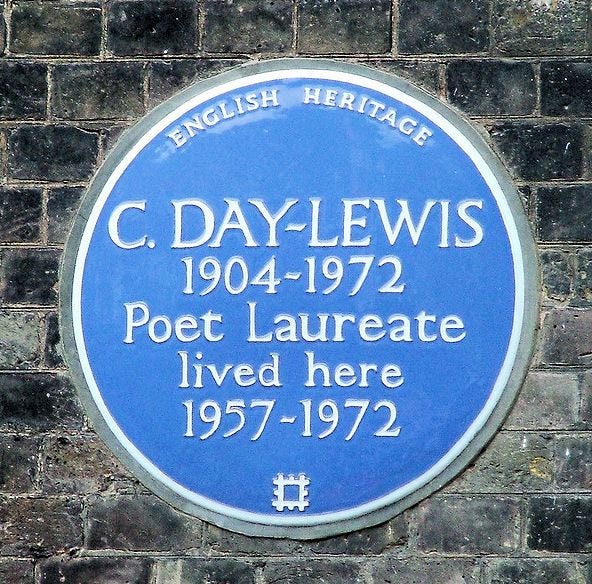
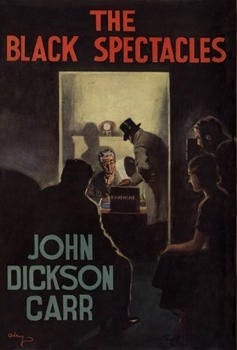
Thanks for sharing your list, Adam. There are a lot of good choices here (not least because they overlapped with mine in places). I didn't think of Double Indemnity, though it is likely to be in the frame for my 40s list whenever we get to that.
Great list - I'll have to ponder mine! I'm afraid I'm one of the many that would switch the DLS to Gaudy Night though.